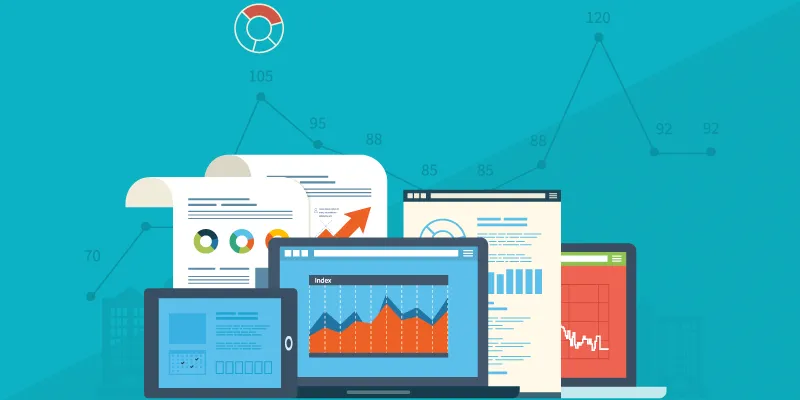How does data analytics help in transforming education
Education is relying on Big Data and Data Analytics to bring development and innovation.

Union Minister for Electronics and Information Technology Ravi Shankar Prasad recently said that India’s digital sector is poised for a giant leap to reach the $1 trillion digital economy mark in the next five years. If this goal comes to fruition, India will see employment generation to the tune of 50-75 lakh jobs, and a tremendous boost to the economy, which is currently thriving on the growing use of the internet, smartphones, and digital identification.
Considering that in an era of virtual reality, gadgets and artificial intelligence, such a promise is not just an achievable aspiration for the country, but also a natural progression. Financial services, healthcare, government and retail sectors, media, and manufacturing sectors have already moved towards the use of digital technology and are seeing a vast improvement in business due to heavy reliance on analytics to improve their business performance and enhance their growth.
Under such a scenario, demand for people with knowledge about technology, and data intelligence – that is to derive statistical and quantitative data on market trends - will be the need of the hour.
Would it be a surprise then to expect the education sector to fill in the gap by churning out the right kind of graduates to fulfill this demand?
Importance of data analytics to enhance learning outcomes
The edtech sector has evolved over a period of time and is now growing with various innovative startups as they see enormous potential in this business. For years now, schools have functioned with two pre-set goals in mind – to customise learning experiences for each individual based on their ability, and to personalize instructions. But to achieve this goal, schools need to have more data that can predict a student’s ability/potential in a particular task.
That’s when big data and analytics come into play.
For example, Imagine classrooms fitted with cameras that capture each child's academic interaction, social interaction, classroom participation, levels of enthusiasm and gravitas. Such data embedded in everyday real-time activities, in schools, is a gold mine, which through predictive analysis, will help improve a child’s performance in academic as well as non-academic activities to drive more operational decisions.
At a macro level, information derived from each student can be used to analyse the student's academic performance, attendance patterns and involvement in other extra-curricular activities like sports or cultural programmes. The results can be used to predict which students are likely to become disengaged, drop out of school or have the potential to excel in sports, so that an intervention from the authorities is auctioned at the right time.
Schools should install a model that monitors and measures the academic performance of the students. The model can use the statistical summary to predict student outcomes right from classroom level to school level, and to take measures to capitalise on the rise of learners and counteract the slide. Similarly, the Detailed Assessment programme, an online practice test for students, can be designed to analyse the understanding of concepts by children, and in turn teacher performance.
Data analytics to improve performance in sports
Big Data and Data Analytics are no longer strangers to the world of sports. In fact, big premier leagues have come of age and have been successful in delivering optimum performance; thanks to data analytics. For example in the IPL -- From auctioning for the best player to predicting who can win the final, everything is supported with data analytics.
The same system is now being used by premier educational institutions to transform a student from being an ordinary player to being an extraordinary one.
International Schools are already using analytics to enhance students’ sports performance. With the help of gadgets, analytical tools can give data points to help analyse students’ on-field performances, in the same fashion as is being currently done by professional players in national and international level games.
–For example, one of the most innovative ways to implement data analytics in sports is to offer Sports Performance Enhancing Data Analytics System (SPEDAS). A NextGen system applicable for sports like basketball helps map an individual player’s movement and the ball movement during a game with accuracy. The data collected by the system can be later deployed through its analytics engine to study a player’s performance in detail.
Students need to wear trackers/tags that will be located by tracking devices to collect data like individual performances, mapping of the sports field and game statistics during intra-school competitions. Thus ensuring students performances are improved to the best of their potential.
Technology to aid the growth of future leaders
We are in an age where schools have to emphasise more on holistic development of students. In the race to provide the best learning experience, schools have now started giving equal importance to sports and other extra-curricular activities as well. That’s where data analytics has started playing an important role. Continuous improvements in technology has made this possible.
Undoubtedly, Data Analytics is the next big thing in education, and industry leaders need to take steady steps to initiate this within the sector. This will only ensure that the economic success that has been foreseen is achieved.
(Disclaimer: The views and opinions expressed in this article are those of the author and do not necessarily reflect the views of YourStory.)







